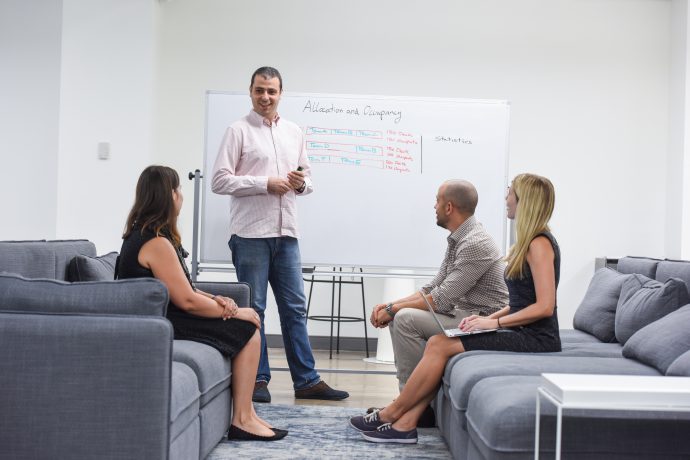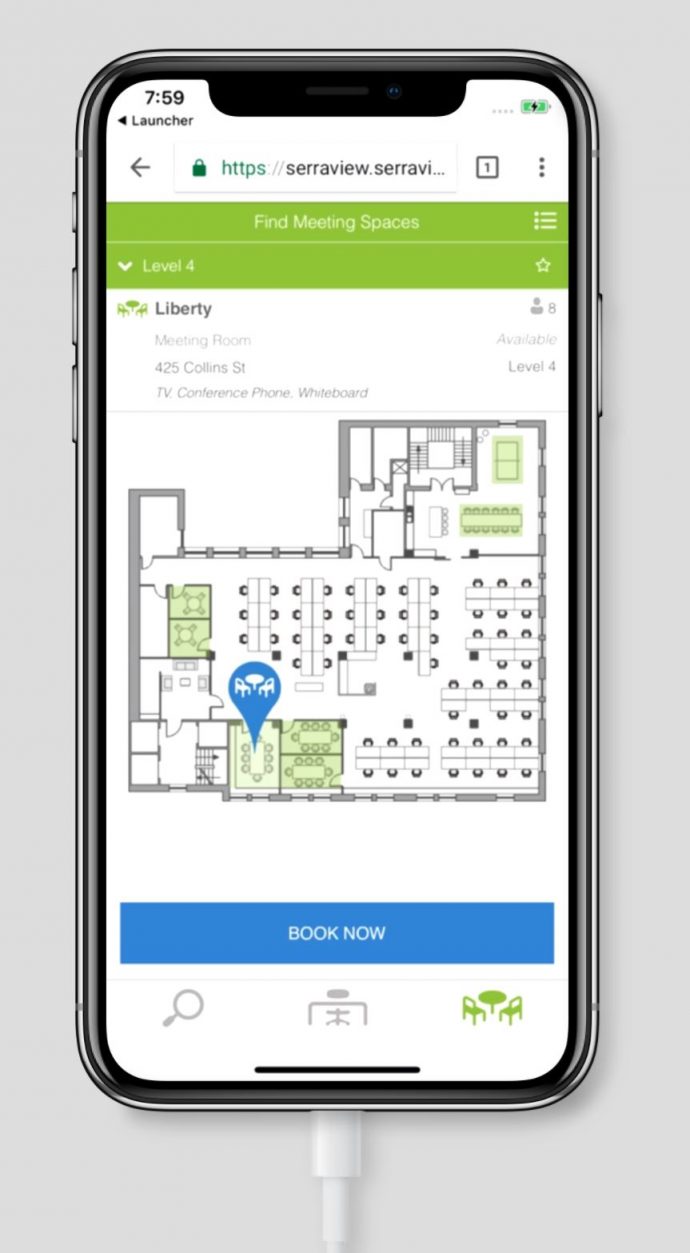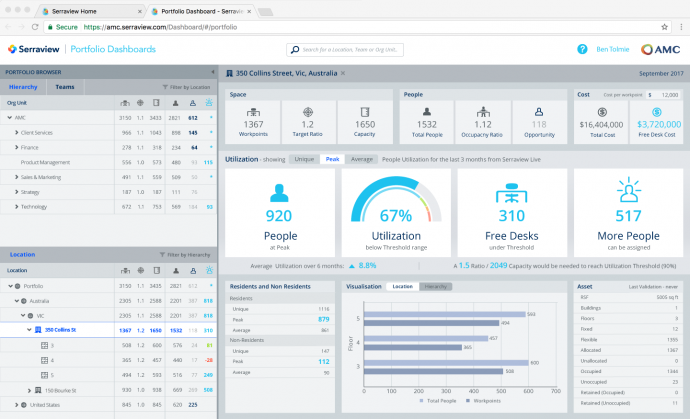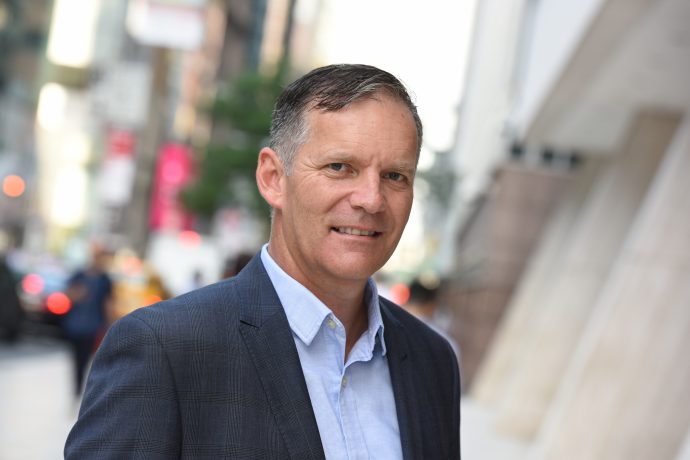Many of our Expert Insight articles discuss the value of integrating new ways of working into the corporate landscape. Smart companies take the time to define and understand the needs of their employees, so they can craft a workplace that will not only provide a great physical space, but will also enable their employees to be more productive and collaborative.
We toss around an alphabet soup of acronyms and labels for these work styles: ABW, NCE, agile, hoteling, free address, etc. Whatever space design path a company chooses, there is still a lot that must happen behind the scenes to ensure that the space functions and does support the business and their goals for success in meeting them.

We had the opportunity to talk with Serraview’s CEO, Stephen Macnee to find out more about the thinking behind their solution, how it’s impacting their clients, and their ability to provide workplaces that enhance their employees’ work lives.
Q: Tell us why you started the company and the core principles behind the product.
Serraview, a space management platform grew out of a consulting gig we delivered to a large Australian financial institution in 2006. We then leveraged our experience working with the Corporate Real Estate (CRE) team, to develop what is now one of the leading tools for space management and workplace optimization that enables companies to not only manage their space but to use the data to better plan, update and track how their space is used. Maintaining this information enables companies to quickly identify how and when space is being used and understand employee work habits, so they can identify whether the workspace is working or needs adjustments.

The main differentiator between Serraview and other platforms, is that we have taken the position that, first and foremost, our product is a vehicle to help companies focus on their people. After that, we built products and functionality around three core principles.
We wanted our products to be intuitive and user friendly. Many space planning solutions are unnecessarily complicated as they are based on engineering processes or intricate documentation that have multiple layers and include information that must be sifted out to be properly used for space management. Serraview is designed around a clear and concise database that captures relevant information needed to allow space managers to get a quick and accurate snapshot of what is going on in their portfolio.
We also created workforce enablement tools that offer employees a way to connect and engage with each other, especially as more workspaces migrate to a more flexible work environment. At the same time, they are providing critical data into Serraview on workspace use.

Second, we wanted to simplify the process of collecting and maintaining data that is used to manage space. We made the interface accessible to everyone, so both the business and corporate real estate teams could easily access and maintain the information they need to do their jobs. If no one can or wants to use a system, then the data becomes old and inaccurate.
Third, we wanted to automate some of the tedious and time-consuming processes. We update our Saas*-based platform with new features and functionality on a regular basis, but we also integrate with companies’ HR and security systems and utilization sources so that we can ensure that the data within Serraview is up to date.
Q: What are the trends that you believe will impact your business?
Early on, when office space was more traditional, and employees were assigned to a cubicle or office, how data was collected and used was totally different. The move to more flexible workplaces moved us to investigate how best to manage spaces that support different functions that are not tied specifically to a person or department.
The workplace today is continuing to change to support the needs of the organization. Work is changing from process-based to knowledge work, while employees are being shifted from full-time to contingent. How we work is also changing. In the past, work was very focused whereas now the goal is collaboration, within a team but also across the organization. These trends are impacting the industry and putting big demands on the teams managing the workplace.

The need to constantly innovate is what drives us and is why we work so closely with our customers to develop solutions that can help them support their employees. Whether finding co-workers easily, finding spaces to meet and collaborate or finding an available workspace for heads down work, much of our innovation comes directly from working closely with our customers.
Q: What is the future of Serraview?
A few years ago, CRE wanted utilization data so they could start to understand how their employees were navigating the space, including how and when it was being used. We started by capturing badge data into our software which gave our clients some data on space use. More recently we’re capturing real-time data which provides more granular details into the efficiency and effectiveness of the space use and design. Now clients need to understand how to effectively use the data.
Serraview’s scenario planning combined with predictive analytics stands heads above other companies. For example, we initially simplified the process to restack a building by automating the process. Space planners can drag and drop and quickly do in minutes what used to take weeks of efforts. But details about what organizations need to work together might still be manual and time consuming. When we add predictive analytics, the process becomes even easier. By leveraging the data captured in our software, we can use predictive analytics, so we can automatically understand synergies and resource requirements that was usually uncovered with survey work, to make restacking a building nearly effortless.

Our mission is to work with our customers to best support their business with the understanding that a successful, advanced workplace drives culture and productivity. Our clients are companies where the CRE and Facilities Management (FM) teams have moved beyond just looking at space as a commodity and square foot per person, to understanding that workspace is a strategic resource and a major component of brand and culture. Space is an investment in the business and the people and our solutions are designed to help our customers maximize the efficiency and effectiveness of their workplaces.
*SaaS is a software distribution model in which applications are hosted by a vendor or service provider and made available to customers over a network, typically the Internet. SaaS is also known as “on-demand software”.


